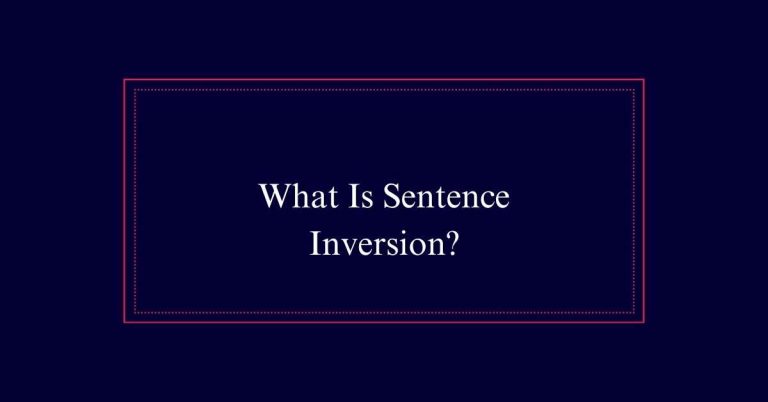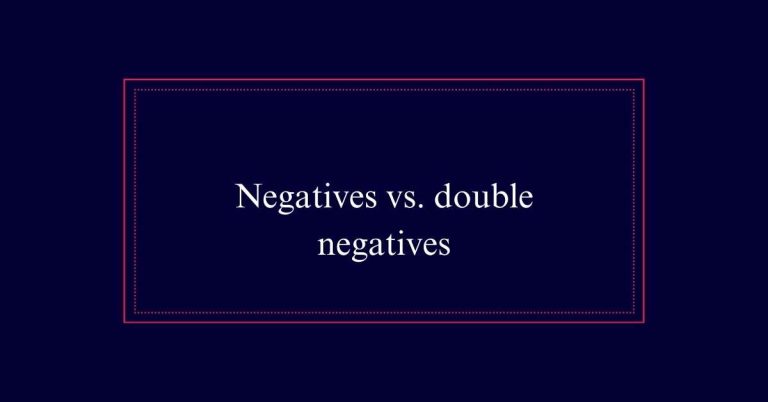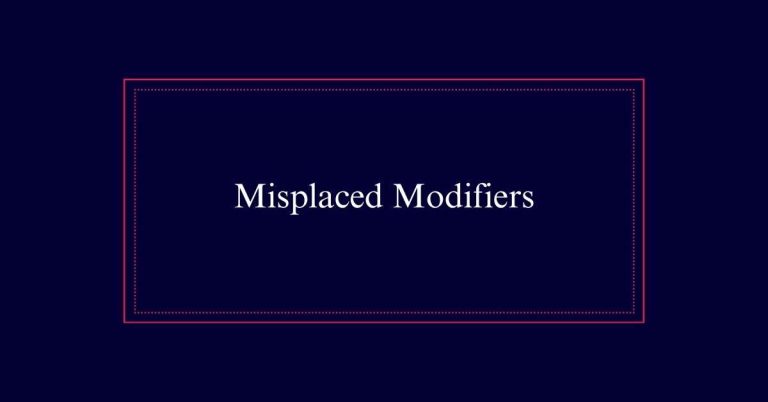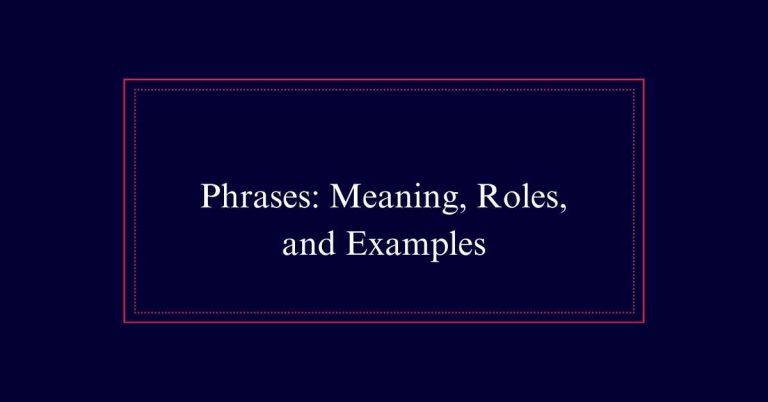Possessive Nouns
Possessive nouns indicate ownership or connection, typically shown with an apostrophe. Singular possessive nouns add an apostrophe and ‘s’ (e.g., ‘the girl’s book’). Plural possessive nouns, for regular plurals, simply add an apostrophe (e.g., ‘the teachers’ lounge’).
For irregular plurals, add an apostrophe and ‘s’ (e.g., ‘the children’s toys’). Possessive pronouns, like ‘his,’ ‘hers,’ and ‘ours,’ don’t use apostrophes. Irregular possessive forms (e.g., ‘men’s’) must be memorized.
Definition of Possessive Nouns
Possessive nouns are nouns that indicate ownership or a direct connection between entities. They show that something belongs to someone or something. This relationship is often marked by the use of an apostrophe.
For example, in ‘the cat’s toy,’ the noun ‘cat’ owns ‘toy.’ Possessive nouns are essential for clarity in writing, as they help specify relationships and ownership. They can be used in various contexts, including both singular and plural forms.
Almost any noun can become possessive, even abstract ones like ‘freedom’s price.’
Singular Possessive Nouns
A singular possessive noun shows that one person, place, or thing owns something. To form a singular possessive noun, you generally add an apostrophe followed by the letter ‘s’ to the end of the noun.
For instance, ‘the dog’s leash’ indicates that the leash belongs to one dog. Another example is ‘Sarah’s book,’ which shows that the book belongs to Sarah. This rule applies even if the noun ends in ‘s’, such as ‘James’s car.’
Plural Possessive Nouns
Plural possessive nouns indicate that multiple items own something. To form a plural possessive noun, first make sure the noun is in its plural form. Then, add an apostrophe at the end.
For example, ‘dogs” as in ‘the dogs’ owner.’
Consider these guidelines:
- For regular plural nouns ending in ‘s’, add an apostrophe after the ‘s’: ‘students’ books.’
- For irregular plural nouns not ending in ‘s’, add an apostrophe and ‘s’: ‘children’s toys.
- Make certain the possessive form is clear to avoid confusion.
- Use possessive nouns to show ownership or relationships.
- Practice by converting sentences with plural nouns to their possessive form.
Possessive Pronouns
Pronouns that show ownership are called possessive pronouns. These pronouns indicate that something belongs to someone.
Common possessive pronouns include ‘mine,’ ‘yours,’ ‘his,’ ‘hers,’ ‘ours,’ and ‘theirs.’ Unlike possessive nouns, possessive pronouns do not require an apostrophe.
For example, in the sentence ‘The book is mine,’ ‘mine’ replaces ‘my book,’ clarifying ownership without repetition. Possessive pronouns can stand alone and do not modify nouns. They enhance writing by making it more concise and avoiding redundancy.
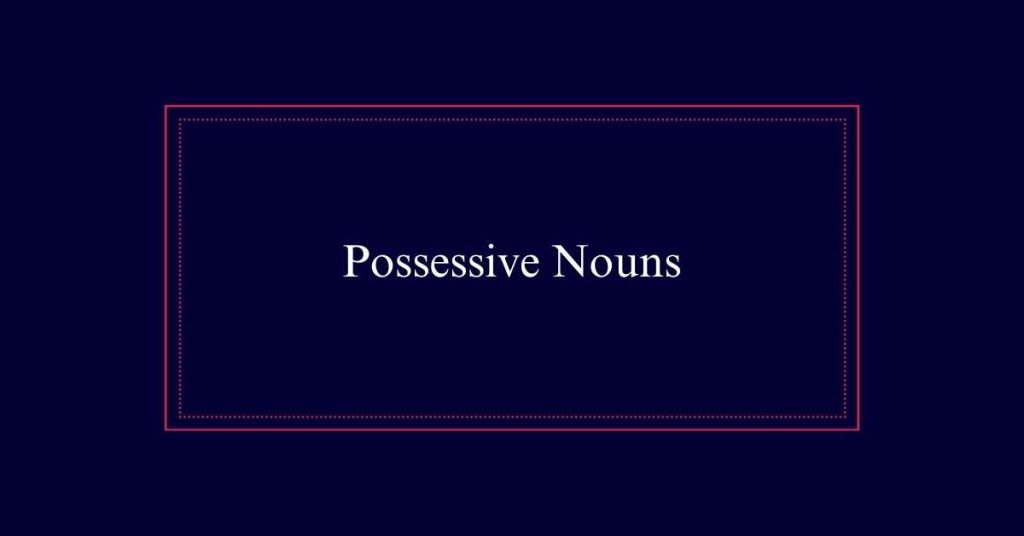
Irregular Possessive Nouns
Irregular possessive nouns do not always follow standard rules for forming possessives. These nouns often have unique ways of showing ownership, which can be confusing.
Here are some key points to remember:
- Children’s: The possessive form of ‘children’ adds an apostrophe and ‘s’ after the irregular plural.
- Men’s: Similarly, ‘men’ becomes ‘men’s’ to indicate possession.
- Women’s: The plural form ‘women’ follows the same pattern, becoming ‘women’s’.
- People’s: For the plural ‘people,’ add an apostrophe and ‘s’ to form ‘people’s’.
- Mice’s: The irregular plural ‘mice’ transforms to ‘mice’s’ for possessive form.
Mass and Collective Nouns
Mass and collective nouns, frequently misunderstood, can also take possessive forms to show ownership. Mass nouns, like ‘water’ or ‘furniture,’ refer to substances or concepts not easily counted. Collective nouns, such as ‘team’ or ‘committee,’ denote groups acting as a singular unit. Both types can take possessive forms to show ownership, adding clarity to your writing.
Here is a table illustrating mass and collective possessive nouns:
| Type | Example Possessive Form |
|---|---|
| Mass Noun | The water’s temperature |
| Mass Noun | The furniture’s condition |
| Collective Noun | The team’s victory |
| Collective Noun | The committee’s decision |
| Collective Noun | The family’s traditions |
Using Apostrophes Correctly
Understanding the accurate use of apostrophes is essential for indicating possession accurately in writing. Misplacing or omitting apostrophes can lead to confusion.
To use apostrophes correctly, follow these simple guidelines:
- Singular Possessive: Add an apostrophe and ‘s’ to a singular noun (e.g., the cat’s toy).
- Plural Possessive: For plural nouns ending in ‘s’, add only an apostrophe (e.g., the dogs’ park).
- Irregular Plurals: For irregular plural nouns, add an apostrophe and ‘s’ (e.g., the children’s books).
- Compound Nouns: Add an apostrophe and ‘s’ to the last word (e.g., my mother-in-law’s recipe).
- Names Ending in S: Add an apostrophe and ‘s’ or just an apostrophe (e.g., James’s or James’ car).
Possessive Adjectives
Possessive adjectives are words that modify nouns to show ownership or relationship. These adjectives include ‘my,’ ‘your,’ ‘his,’ ‘her,’ ‘its,’ ‘our,’ and ‘their.’ They are used before a noun to indicate who owns something or to whom something belongs.
For example, in the sentence ‘This is my book,’ the word ‘my’ is a possessive adjective modifying the noun ‘book’ to show ownership. Unlike possessive nouns, possessive adjectives do not use apostrophes. They are essential for providing clarity in sentences by specifying relationships and ownership.
Common Mistakes
One of the most common mistakes in using possessive nouns is confusing the contraction ‘it’s’ with the possessive adjective ‘its.’ ‘It’s’ stands for ‘it is’ or ‘it has,’ while ‘its’ shows ownership. This error can make sentences unclear.
Another common mistake involves improper placement of apostrophes in possessive nouns. For example, writing ‘the dog’s toys’ correctly indicates that the toys belong to one dog, whereas ‘the dogs’ toys’ implies multiple dogs.
Common mistakes include:
- Using ‘it’s’ instead of ‘its’
- Misplacing apostrophes in plural possessives
- Forgetting the apostrophe in singular possessives
- Using possessive pronouns incorrectly
- Confusing possessive nouns with plural nouns
Importance of Possessive Nouns
Recognizing and correctly using possessive nouns is essential for conveying clear and precise relationships between subjects in writing. They indicate ownership, making sentences more informative and specific.
For example, ‘Mary’s book’ clearly shows that the book belongs to Mary. Without possessive nouns, sentences can become ambiguous and confusing. They help in distinguishing between similar subjects, such as ‘the dog’s leash’ versus ‘the dogs’ leashes,’ clarifying the number of dogs involved.
Using possessive nouns also enhances readability by avoiding repetitive phrases. For instance, ‘John’s car’ is more concise than ‘the car that belongs to John.’

